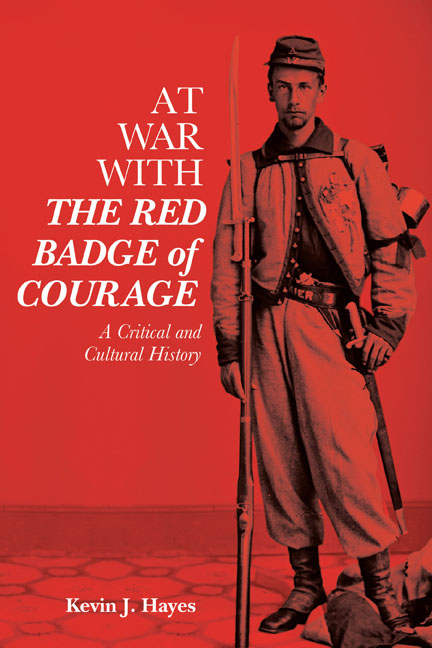1 - “Read the Badge”
Published online by Cambridge University Press: 24 November 2020
Summary
Criticism of The Red Badge of Courage first came in the form of personal advice. Stephen Crane started writing the novel in June 1893 while living in New York. Later that month he left Manhattan for Lake View, a tiny suburb south of Paterson, New Jersey, where he moved into the garret of his brother Edmund's home. Edmund remembered Stephen working on Red Badge all summer. Once the family retired for the evening Stephen would ascend to the garret and write into the small hours. Once his war novel started taking shape, he would read chapters to Edmund to get his advice.
Stephen was not necessarily looking for a detailed critique: he just wanted to know whether Edmund liked the story. He did. As Stephen read the draft aloud, his brother occasionally suggested changes. Edmund recalled: “When, listening to the reading of the story, I ventured to suggest the substitution of a word that would give the meaning intended better than the word he used, he would consider the matter and then decide, oftener against than for the suggestion. He had the confidence of a genius” (13).
Stephen Crane was born on 1 November 1871 in Newark, New Jersey, which, as Upton Sinclair quipped, “goes to prove that a genius may spring up anywhere in the world” (346). Crane was only twentyone when he began Red Badge. Despite his youth, Red Badge was not his first book. Earlier in 1893 he had published Maggie: A Girl of the Streets (A Story of New York). But perhaps “published” is not quite the right word. Crane had been unable to find a publisher for the daring story of Maggie Johnson. Though his eponymous heroine is the most memorable prostitute in American literature, her story was far too edgy for mainstream publishers in the late nineteenth century, a time when writers were willing to write what publishers were unwilling to publish. Crane exhausted a small inheritance to self-publish Maggie. It sold few copies.
Undaunted, Crane began Red Badge three months after Maggie appeared. He sought the advice of others throughout its composition. Crane lived in Lake View until September, when he moved back to New York, sharing a studio in the old Art Students League building on East 23d Street with three artist friends.
- Type
- Chapter
- Information
- At War with The Red Badge of CourageA Critical and Cultural History, pp. 9 - 36Publisher: Boydell & BrewerPrint publication year: 2020

